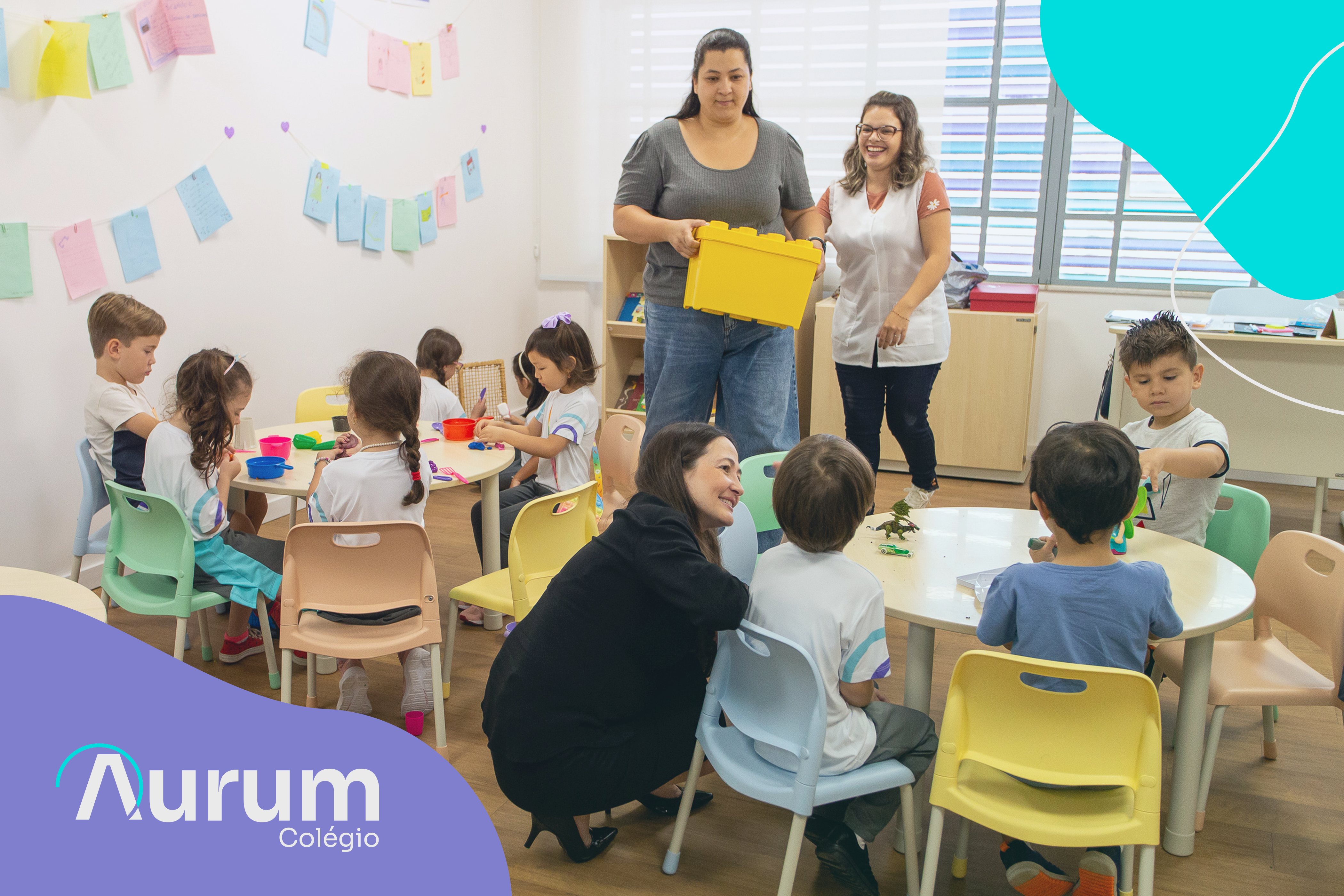
Have you ever wondered how a bilingual school works? After all, with all the recent changes in teaching in our country, how can bilingual schools offer the necessary focus on the Brazilian curriculum recommended by the BNCC (Brazilian Common National Curricular Base)?
In this post, we are going to talk about how it is possible for a school to be fully aligned with the national education guidelines and still promote an active bilingual education, which values the development of cognitive and socio-emotional skills and competencies.
What you will see:
Good reading!
For a long time, traditional English classes have been part of the school curriculum. After all, learning a second language is indispensable for the globalized and hyperconnected world we live in today. However, simply having English classes inserted in the school calendar does not characterize a bilingual system.
These classes do not provide a really significant contact with the language, mainly because they only offer a workload once or twice a week, that is, approximately 2 to 4 hours. In Bilingual Teaching, the average is 9 hours per week and, at Colégio Aurum, a great differential is the 19 hours per week for classes entirely taught in English, in addition to moments of leisure and socialization.
All this allows for a much greater immersion in the language and makes students establish meaningful connections with the world around them both in their native language and in another language.
Teaching within the bilingual school works in a specific way, having a significant impact on the learning process and on the development of students' skills and abilities, inside and outside the classroom.
This happens because the contact with a new language right during Kindergarten and Basic Education makes all the difference for development, since it is considered the most profitable moment for learning. It is during this period that children have a much more refined ability to absorb knowledge and neurological flexibility than adults.
Therefore, the literacy process added to the learning of a new language can provide a much richer education, which has a series of benefits for interpersonal communication skills, text interpretation and even for the absorption of different cultural concepts.
Encouraging reading is also an integral part of bilingual learning, as it allows the acquisition of a more diversified vocabulary, as well as being a way of introducing students to the extremely healthy habit of reading for pleasure and not out of obligation.
The sum of all factors within bilingual learning opens doors for students to express themselves in more creative and elaborate ways, which brings benefits such as the practice of autonomy and the development of socio-emotional education.
Also check:
Listed below are some benefits of Bilingual Education that are worth highlighting, such as:
One of the main advantages of bilingual teaching is that it allows children to learn new ways of facing problems and challenges.
This directly impacts cognitive and creative development, making them more proactive and resilient in their responsibilities inside and outside school.
Mastering a new language opens up a much wider range of knowledge possibilities. One of them is cultural enrichment, which provides the opportunity for a new perspective about the world, inviting students to explore and learn about new customs and traditions.
Learning a new language offers a whole new vocabulary and forms of expression that allow students the chance to exercise their autonomy when expressing themselves verbally, improving interpersonal communication and increasing the ability to feel empathy.
The mastery and fluency of a new language can be acquired more easily during childhood, since at this stage the child produces a greater number of synapses in the brain, favoring the acquisition of a second language at the same level of fluency as the mother tongue.
At Aurum, we favor this phase with an immersion in situations in English corresponding to 80% of school time. It is also worth mentioning that those already fluent in a second language have an easier time learning a third and so on.
Being bilingual is an asset for anyone who likes or needs to travel to other countries, whether for work or pleasure.
This is perhaps one of the most important factors in learning a new language right at the beginning of life, as it is a way to expand horizons in terms of world perspective and sense of belonging.
In addition to travel, fluency in a second language can also be useful for understanding different cultural products such as books, series, movies, music and many others.
To learn more about Colégio Aurum’s Bilingual Education, visit the website and schedule your visit!
Bilingual Education
Meet and fall in love with our space and our teaching!
SCHEDULE YOUR VISIT

(11) 4863-1500
Av. Doutor Adoniro Ladeira, 94 - Vila Nova Jundiainopólis
CEP: 13.210-800 - Jundiaí/SP - Brasil
© Colégio Aurum. All rights reserved
Privacy Policy
No comments yet.
Let us know what you think.